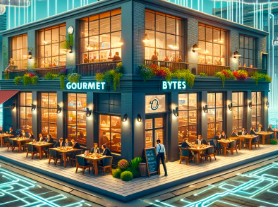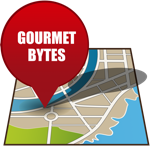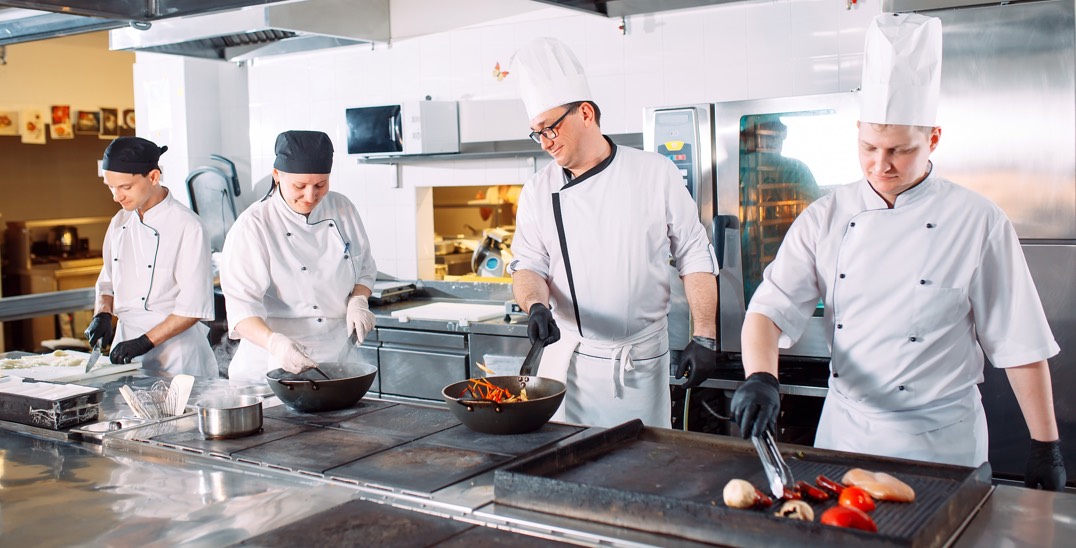Part 1: Introduction and Basic Concepts
When you're hungry for a good meal, you might head to your favorite restaurant. Similarly, when you're in search of information, entertainment, or a product, you'll likely visit a website. To many, the inner workings of a website might seem complex, but they're quite similar to the internal operations of a restaurant in many ways. Let's delve into this analogy to make the complexities of websites more understandable for everyone.
Finding the Restaurant (The Role of DNS)

Before you can enjoy a meal at a restaurant, you need to know where it’s located. If you hear about a great new place called "Gourmet Bytes," but don't have the address, you might look it up online or ask a friend for directions.
This is similar to what the Domain Name System (DNS) does on the internet. When you want to visit a website, you usually remember its name, like "example.com," not its actual numeric (IP) address.

The DNS acts like a directory, translating the website’s name into a numerical IP address that points to its actual location on the Internet, just like finding out the street address for "Gourmet Bytes." Once you have the address, you can immediately drive there—or in web terms, your browser knows where to send its request for content.
Arriving at the Restaurant (Visiting a Website Page)
For purposes of this analogy, "Gourmet Bytes" is a restaurant known for its efficiency. It provides each customer with a menu that contains only 10 combination meals to choose from (10 website pages).
You can think of the internet as the waitstaff. After you've requested “Combo A” from the menu, the waitstaff carries your order back to the kitchen. Similarly, the internet carries your web browser's request to the website's computers. The better the waitstaff, the faster and more accurately your order is relayed, less chance of food being dropped, or delays. In the digital realm, a faster internet connection means quicker website loading times.
Inside the kitchen, the preparation of your "Combo A" begins. In a poorly performing scenario, each component of your meal would be prepared sequentially: the steak is cooked first and left to rest, then the vegetables are cooked and set aside, after which the potatoes are cooked. Finally, after considerable time, everything is assembled on the plate and then delivered to the customer. This method would extend the customers' waiting time and provide a poor quality dining experience.
However, that’s not the "Gourmet Bytes" way. Here, the team values the synchronization of their efforts.

Chefs within an efficient, well-organized kitchen work in unison, much like an orchestra, each responsible for a different part of your "Combo A." They sear the steak, sauté the vegetables, and roast the potatoes concurrently, ensuring that every element of your meal is cooking at the same time. This not only minimizes the wait for the customer but also guarantees that each part of your dish is fresh, hot, and ready to be savored. Once your meal is assembled and ready, the waitstaff carries it to your table.
In the digital domain, your web browser and the website are in a constant dance to deliver a symphony of “cooked-to-order” content to you, the visitor. Navigating to a simple web page is akin to ordering “Combo A”—a seemingly straightforward request that hides the complexity of the kitchen’s efforts in filling the order. Your hearty "steak" is the main text; the "potatoes" are the images sprinkled throughout; "vegetables" take the form of fonts, each adding flavor and texture; "garnishes" and "presentation" are represented by the style sheets.
The browser doesn't keep you waiting for the entire dish to be ready before presenting the first bite. Much like an adept chef, it knows that your “Combo A” isn’t just a steak, but a medley that includes potatoes, vegetables, and garnishes. It anticipates each component. As soon as the main text arrives, it finds all the references to the other parts of the meal, and sends additional requests to the website to prepare and dispatch all the other elements to your digital plate as quickly as possible.

This approach delivers a better user experience—you begin savoring the main content while your browser assembles the rest of your page, each part arriving ideally just in time to complete the experience. It’s the reason you may sometimes see images pop up moments later and style elements refine the layout in increments; the browser has reserved their spots, assuring you that each piece is en route, ensuring that the full-page presentation is both swift and satisfying to the visitor.
Now that we’ve seen how a simple web visit mirrors a meal order at 'Gourmet Bytes', let’s explore further. In the next part of our series, we'll dive into the bustling world of website traffic and resource management. Just like a popular restaurant faces challenges during peak hours, websites must skillfully manage high visitor traffic. Stay tuned as we expand our restaurant analogy to understand these digital dynamics.














